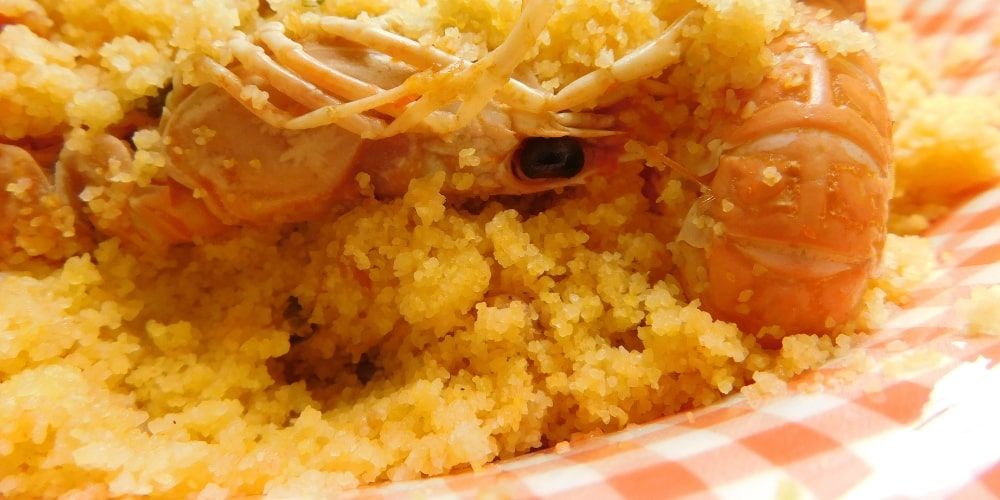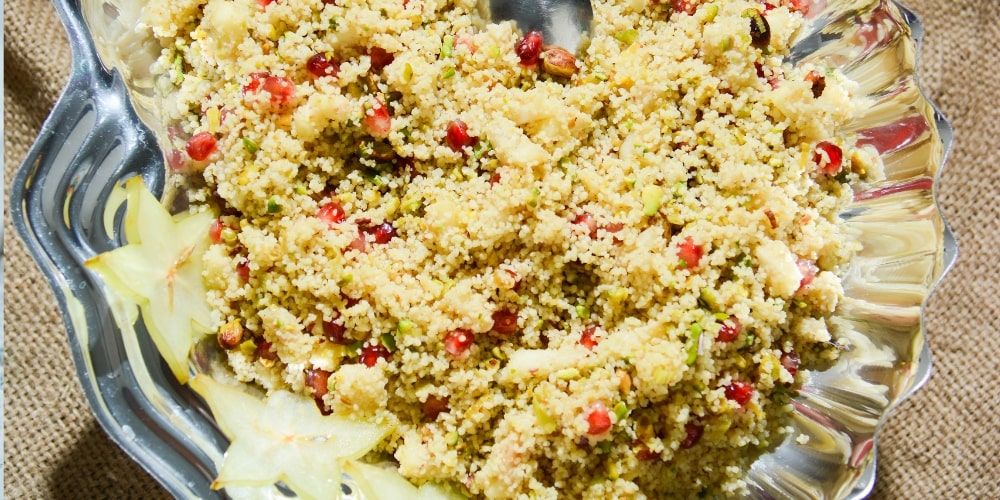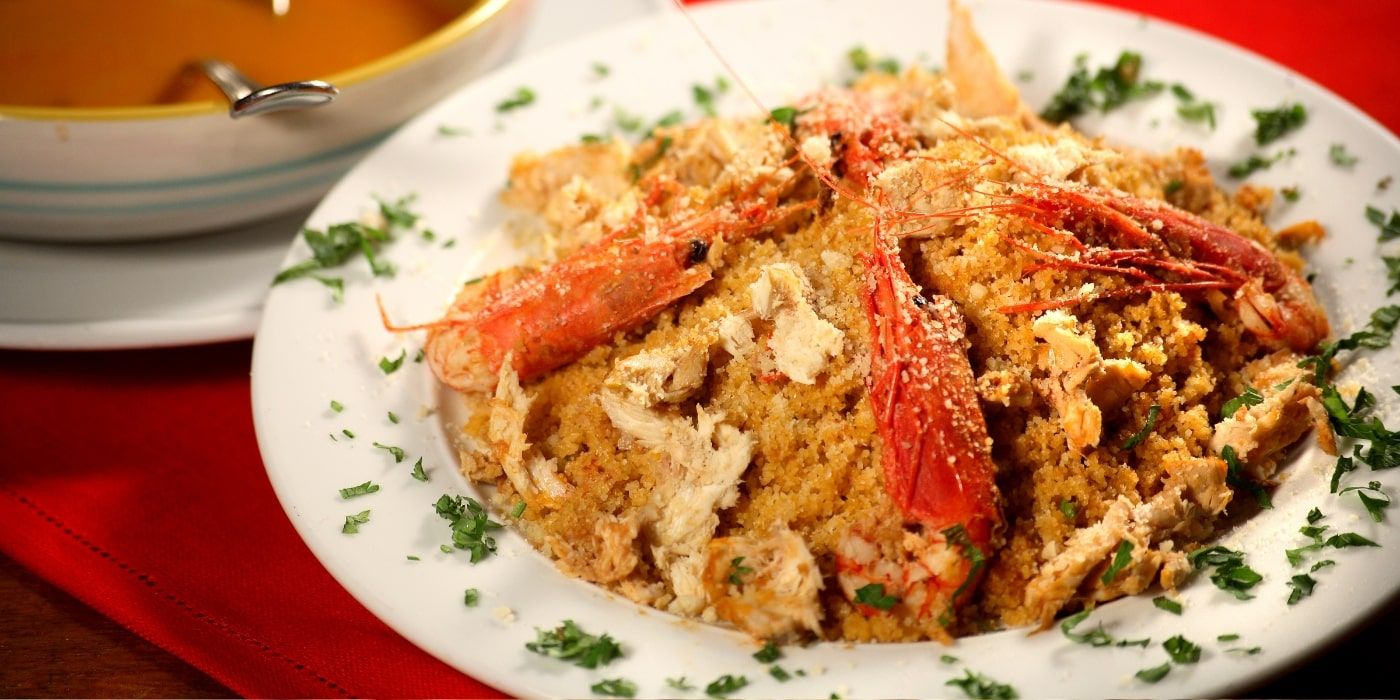Are you looking for inspiration to prepare delicious Trapanese cous cous? It is an original idea that will delight your diners with its unique flavor, resulting from the mix of two cultures. This typical dish of the Sicilian gastronomic tradition evokes the contaminations of Arab culture, which have characterized ancient Trinacria over the millennia, and the exotic spicy aromas of the Maghreb. On any trip to Sicily, its irresistible mix of Mediterranean fragrances and North African flavors will win you over.
Trapanese cous cous is a culinary ritual that requires a long preparation. It is particularly suitable for setting the table on spring and summer Sundays thanks to its lightness and the freshness of its ingredients, particularly appreciated during the days dominated by the summer heat. Follow Visit Italy's advice to surprise your guests with the heady amalgam of aromas of this dish that symbolizes conviviality.

Trapanese cous cous: history and origins of this ancient speciality

Soup fish, paprika or hot chili pepper, aromatic herbs: Trapanese cous cous, an exquisite typical Sicilian regional dish, is one of the most iconic specialities of Southern Italy. According to the most accredited etymological studies, its name derives from kouskous, which refers to the container used to cook semolina in the Berber language.
Its long tradition attests to its origin along the coasts and in the areas of sub-Saharan Africa, and the earliest evidence of this thousand-year-old delicacy, which dates back to the Middle Ages, is dated between the 7th and 8th centuries. The main historical references for the recipe include the Kitab fadalat al-Khiwan by Ibn Razin al-Tujibi, an 11th-century Muslim cookbook, and in the Egyptian world. Due to its versatility, it was the favourite food in the diet of the Berber nomads for several centuries.
We find one of the first traces of its arrival in Sicily in an essay on Sicilian culinary habits written by the anthropologist Giuseppe Pitré in the 19th century. Other reliable and relevant sources include the Sicilian Etymological Vocabulary, published in 1785, which explicitly mentions the dish as cuscus, Science in the Kitchen and the Art of Eating Well by Pellegrino Artusi, published in 1891, and L'arte Cucinaria in Italia (The Art of Cooking in Italy) by Cougnet in 1910.
According to a fascinating legend, the preparation of Trapanese cous cous began with Solomon's court chef following his love disappointment with Queen Sabina. It made him regain the energy he needed to rule wisely, and in Berber culture, cous cous became a symbol of love and brotherhood.
Trapanese cous cous ingredients

Fish Trapanese cous cous is a dish with very ancient origins. It is one of the typical dishes of the varied Sicilian gastronomic tradition, mainly from the area between Trapani and San Vito Lo Capo.
Would you like to know how to prepare cous cous alla Trapanese? One of the peculiarities that distinguishes it from the North African recipe is the use of fish instead of meat. The traditional recipe calls for the cous cous, made from delicious spheres of durum wheat semolina, to be prepared by hand using the so-called incocciatura technique and cooked in a typical couscoussiera, a traditional vessel resembling a steamer.
1 kg of couscous
EVO oil
water
peppercorns
cinnamon (optional)
For the fish stock: 2 kg fish (soup fish, langoustine, gurnard, clams or scorpion fish, grouper, dentex, conger eel)
1 1/2 litres of water
1/2 litre of fish stock
a few peppercorns
two bay leaves
two parsley stalks
one pinch of saffron
one onion
salt
Prepare approx. 800 g organic tomato pulp for the sauce
one onion
one clove of garlic
50 g peeled almonds
parsley
oil
salt
chili pepper.
To cook the couscous, choose five peeled tomatoes.
one onion
three bay leaves
fish bones
salt
pepper
To garnish the couscousu, choose six delicious baby squid
15 prawns
slices of swordfish
one glass of dry white wine
flour
oil
pepper
curly parsley
lemon
Treat yourself to a marvelous boat day trip from Trapani to contemplate the natural beauty of Favignana and Levanzo while enjoying a delicious aperitif.
Explore Favignana and Levanzo with a boat tourTrapanese cous cous according to the original recipe

The making of the Trapanese cous cous starts by preparing the broth. Pour some water into a large saucepan, add peppercorns, bay leaves, onion, garlic, and a pinch of salt, cover with a lid, and leave to cook for fifteen minutes. Prepare an emulsion of oil, parsley, almonds, onion, and garlic with a blender. Pour the resulting mixture into a pan and sauté for about 6 minutes. Add the tomato cocnnentrate to the mixture and cook for another 3 minutes. Place the soup fish in the pan, cover the preparation with cold water, and cook for half an hour. After cooking fish, you can drain it, bone it, and filter the strained mixture to obtain the tasty broth for the cous cous.
Pour the fish into the tomato sauce and add the previously obtained stew. You can now prepare the cous cous by pouring water into a bowl to obtain micro granules by slowly moistening the semolina. Using your fingertips, turn the mixture clockwise until tiny granules form. Season the cous cous thus obtained by mixing it with chopped onions, garlic, almonds, and olive oil. Cook it in a bain-marie, adding some spices such as lemon slices, cinnamon, cloves, and bay tree leaves for an hour and a quarter. Once cooked, open the couscoussiera, place the chopped fish in it, close it up, and cook for another 15 minutes.
Place the cous cous in a pot and douse it with the tasty fish stock, pouring it in a little at a time until it has been absorbed completely, and wait a couple of hours before serving to bring out all the flavours. Pay attention to arranging the ingredients in the lower part of the cous cous bowl. When boiling, the water must not wet the upper portion. Also during boiling, cover the perforated bottom with a dampened napkin and tie the napkin over the lid of the pot, steaming for approximately 20 minutes.
For the garnish, emulsify the white wine, a few tablespoons of oil, and a sprinkling of pepper to marinate the swordfish. We recommend serving by arranging the cous cous in the centre of the dish and garnishing with the soup fish and fragrant lemon slices.
Trapanese cous cous: taste its variants
People who prefer to taste original recipes usually consider it risky to adapt the preparation according to family traditions. To fully illustrate the different interpretations of the Trapanese cous cous recipe, we will propose some variants. In some of them, the ingredients include saffron, shellfish, seafood, swordfish, moray eels, or eels. A first alternative version of the recipe suggests making a tasty sauce using peppers and tomatoes and layering it with tuna to go with the cous cous.
If you prefer seafood, you could enrich the recipe with squid, octopus, clams and mussels, calamari, and shrimp already peeled, which will personalise the recipe and give it fragrant Mediterranean flavours. For vegetarians, we recommend cous cous enhanced with delicious vegetables such as peppers, aubergines, courgettes, peas, carrots and blanched tomatoes. To make it even more delicious, you could combine it with tasty fish balls, prepared with sea bream meat, parsley, thyme, and boiled potatoes.
For palates that like to experiment creatively and imaginatively with new specialities, we also suggest trying chicken cous cous to surprise your friends and family with a delicacy with the irresistible aroma of paprika.
Explore the splendid masterpieces of Sicilian art by visiting the Interdisciplinary Museum of Messina with a Visit Italy ticket.
Visit Interdisciplinary Museum of MessinaTake part in the Cous Cous Fest 2024 in San Vito Lo Capo
If you enjoy trying the many regional recipes during your travels, you could take advantage of this fantastic opportunity and participate in the Cous Cous Fest, which takes place every year in San Vito Lo Capo. It is a prestigious and internationally renowned gastronomic event, during which cous cous will symbolise cultural integration and brotherhood between Mediterranean civilizations.
This year's edition, scheduled from 20 to 29 September 2024, will host chefs, artists, and guests from every corner of the planet who will compete in the gastronomic competitions of the Italian national championship and the renowned Cous Cous World Championship. In the gastronomic laboratory that the town will be sparkled with, you will taste the many variations of the recipe of the delicious Trapanese cous cous at the stands, learn the technique of incocciatura, and participate in cultural meetings and tastings.
About the author
Written on 04/07/2024



Simone Pini
Embark on a taste journey to discover the traditional recipe of Trapanese cous cous, a typical seafood delicacy of Sicilian cuisine.